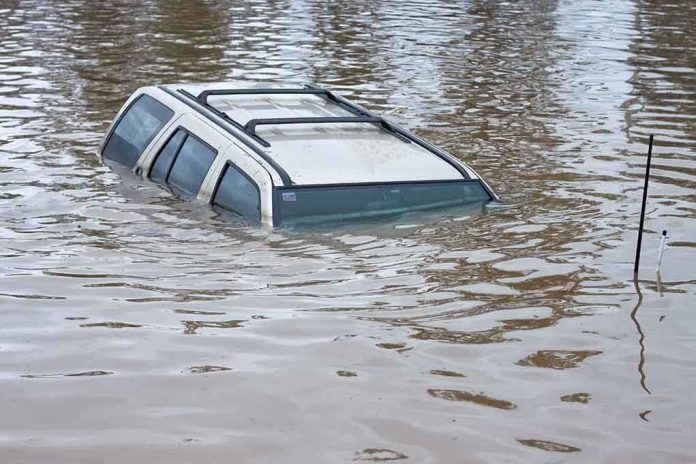
In just three days, Nepal’s monsoon rains transformed from seasonal weather into a deadly force of nature that erased entire villages from the map and claimed dozens of lives in minutes.
Story Overview
- At least 47 people confirmed dead with nine missing after devastating landslides and flash floods swept through eastern and central Nepal
- The Ilam district bore the brunt of destruction with 35 fatalities as entire villages vanished under torrents of mud and debris
- Nepal’s Armed Police Force launched emergency rescue operations while authorities warned residents of continued danger from rising rivers
- Climate change intensifies Nepal’s vulnerability to extreme weather events, making the Himalayan nation a recurring victim of nature’s fury
When Mountains Become Death Traps
Friday’s heavy rains triggered a catastrophic chain reaction across Nepal’s treacherous terrain. The mountainous geography that defines this Himalayan nation became its executioner as saturated slopes gave way under relentless downpours. By Sunday, rescue teams faced the grim reality of villages completely obliterated, their residents buried under tons of earth and rock that had cascaded down without warning.
The Ilam district in eastern Nepal emerged as ground zero for this natural disaster. Here, landslides didn’t just damage homes or block roads—they consumed entire communities. Thirty-five people lost their lives in this single district, representing three-quarters of the region’s total casualties. The scale of destruction left rescue workers struggling to reach isolated areas where survivors might be trapped.
Race Against Rising Waters
Nepal’s Armed Police Force coordinated desperate rescue efforts as rivers continued their dangerous ascent. The combination of landslides and flash floods created a dual threat that amplified the disaster’s impact. While landslides buried communities under debris, flash floods swept away everything in their path, including roads and bridges that rescue teams needed to reach victims.
Authorities issued stark warnings to residents as water levels showed no signs of receding. The continuing rainfall meant the crisis remained active, with new landslides possible at any moment. Nine people remained missing as of the latest reports, their fate uncertain amid the chaos of collapsed infrastructure and altered landscapes.
Climate Change Weaponizes Weather
This disaster represents more than isolated tragedy—it exemplifies how climate change transforms Nepal’s annual monsoon season into an increasingly lethal phenomenon. Altered rainfall patterns now deliver more intense precipitation over shorter periods, overwhelming the natural drainage systems that mountain communities have relied upon for generations. The result is a country trapped between geological necessity and meteorological violence.
Nepal’s position in the Himalayas makes it inherently vulnerable to landslides and floods, but recent years have witnessed an escalation in both frequency and severity of such events. The nation’s infrastructure, designed for traditional monsoon patterns, struggles to cope with the new reality of extreme weather events that arrive with little warning and devastating force.
Beyond the Immediate Crisis
The economic and social implications extend far beyond the immediate death toll. Rural communities that depend on agriculture face long-term displacement as farmland disappears under debris or becomes too unstable for cultivation. The destruction of roads and bridges isolates survivors, complicating relief efforts and threatening future development prospects for affected regions.
This disaster underscores the urgent need for Nepal to revolutionize its approach to disaster preparedness. Early warning systems, improved infrastructure resilience, and community-based emergency response protocols could mean the difference between manageable disruption and wholesale catastrophe. As climate change continues to intensify weather patterns, Nepal’s survival depends on adapting to a new normal where monsoon seasons carry the potential for mass destruction.
Sources:
Heavy rains kill at least 47 in Nepal, block roads






